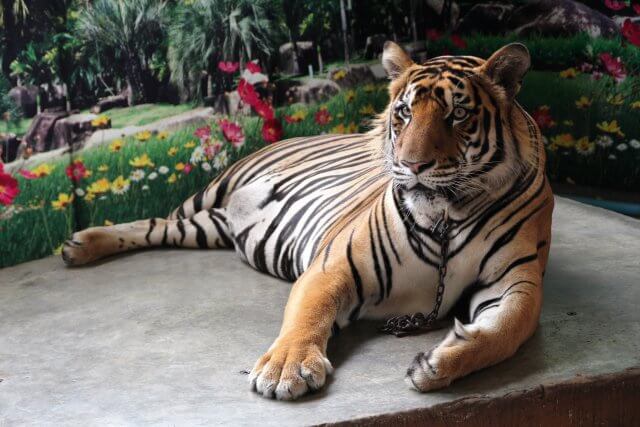The Majestic Connection: Tigers and Humans Unveiled
Tigers and Humans: Unveiling the Dynamic Connection between Two Dominant Forces.
Tigers and humans have a long and intriguing history of interactions, characterized by both fear and fascination. As two powerful species, their paths have crossed in various ways, leading to a complex relationship that has evolved over time. From ancient folklore and cultural symbolism to modern-day conservation efforts, the interactions between tigers and humans continue to captivate and inspire. In this article, we will delve into the fascinating world of tigers and humans, exploring the dynamics, impacts, and significance of their interactions throughout history.
The Fascinating Relationship between Tigers and Humans: A Closer Look at Their Coexistence
Tigers and humans have long shared a complex and fascinating relationship. These two powerful species have coexisted for centuries, with their interactions ranging from fear and conflict to admiration and conservation efforts. Exploring the dynamics of this relationship can shed light on the intricate connections between humans and the natural world.
Historically, humans have viewed tigers with a mix of awe and fear. The sheer power and beauty of these majestic creatures have captivated our imaginations, leading to their portrayal in myths, folklore, and art. Tigers have been both revered and feared, symbolizing strength, courage, and danger. This dichotomy has shaped our perception of these animals, creating a sense of fascination and respect.
However, as human populations expanded and encroached upon tiger habitats, conflicts arose. Tigers, being territorial creatures, often clashed with humans over resources and territory. Livestock depredation became a significant issue, leading to retaliatory killings by humans. This cycle of conflict threatened the survival of tiger populations and strained the relationship between the two species.
Yet, despite these challenges, there have been instances of coexistence and even collaboration between tigers and humans. In some cultures, tigers are considered sacred, and efforts have been made to protect them. Communities have established sanctuaries and reserves to safeguard tiger populations, recognizing their ecological importance and the need for their conservation. These initiatives have not only helped protect tigers but have also provided economic opportunities for local communities through ecotourism.
Furthermore, the relationship between tigers and humans has evolved beyond mere coexistence. Conservation organizations and governments have recognized the importance of involving local communities in tiger conservation efforts. By engaging communities in conservation projects, they have fostered a sense of ownership and responsibility towards protecting these magnificent creatures. This collaborative approach has yielded positive results, with tiger populations showing signs of recovery in some areas.
In recent years, there has been a growing interest in understanding the behavior and ecology of tigers. Scientists and researchers have employed advanced technologies such as camera traps and satellite tracking to study these elusive creatures. By gaining insights into their movements, habitat preferences, and social dynamics, we can better understand how to mitigate conflicts and ensure the long-term survival of tigers.
Moreover, the relationship between tigers and humans extends beyond conservation efforts. Tigers have become ambassadors for broader environmental issues, symbolizing the need to protect biodiversity and preserve natural habitats. Their conservation has become a rallying point for raising awareness about the interconnectedness of all species and the importance of maintaining a healthy ecosystem.
In conclusion, the relationship between tigers and humans is a complex and intriguing one. From fear and conflict to admiration and conservation, this relationship has evolved over time. While challenges persist, there is hope for a harmonious coexistence between these two powerful species. By understanding and appreciating the dynamics of this relationship, we can work towards a future where tigers thrive in their natural habitats, and humans live in harmony with the natural world.
Conclusion
In conclusion, the interactions between tigers and humans are complex and intriguing. As two powerful species, their relationship has evolved over time, ranging from fear and conflict to admiration and conservation efforts. Tigers have historically been feared and hunted by humans, leading to a decline in their population. However, in recent years, there has been a growing recognition of the importance of conserving these majestic creatures. Efforts are being made to protect tiger habitats, implement anti-poaching measures, and promote coexistence between tigers and local communities. The future of tigers and humans depends on our ability to strike a balance between conservation and sustainable development, ensuring the survival of both species for generations to come.
Read More About Tigers From Wikipedia




